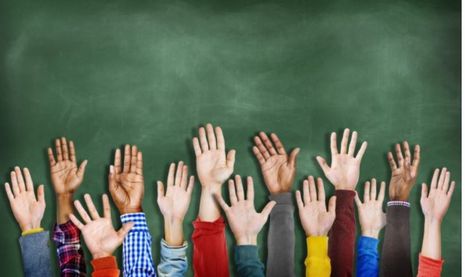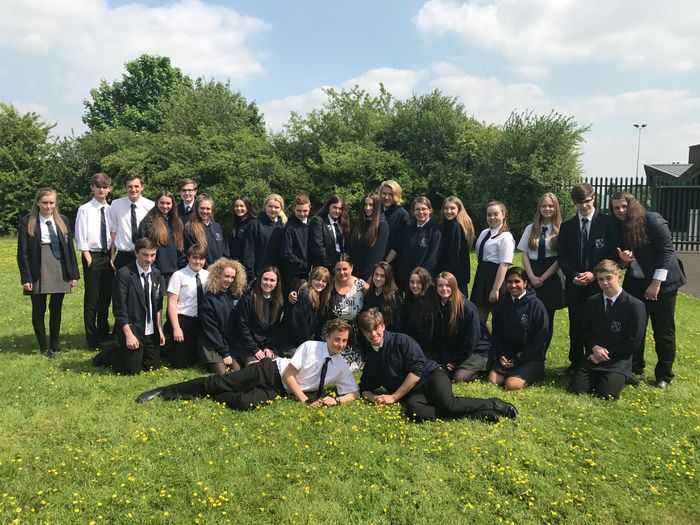Bursting the bubble: Perspectives on pedagogy in the pandemic
Kevin Glasgow shares his experience returning to teach at primary school after lockdown was relaxed, and discusses the challenges of a full return to the classroom

Disruption to education is something we have all become familiar with: colleges emptied, libraries shut, and Cambridge looking like a ghost town (at least for a time). For me, there has been a double hit: as an educational researcher and a teacher, I have seen first-hand just how disruptive school closures have been as a result of the pandemic. The Year 1 ‘bubble’ I returned to as the government began lifting lockdown has opened my eyes to the impact of remote learning, the realities of being back in the classroom, and the legacy that both may leave. Drawing on my own perceptions, I will discuss the realities of virtual learning environments (VLEs), ‘bubble’ learning, and where we can expect to go next.
For most of us, the only VLE we may have encountered is Moodle. When schools were closed, primary and secondary educators were suddenly forced to find their own Moodle equivalent and quickly transfer all of their previous face-to-face teaching online. Whilst some may have used Moodle, many different platforms for planning, setting and marking work have become widespread. These platforms have also been used to communicate with parents and pupils and to maintain vital pupil-teacher relationships - thus quickly becoming an indispensable feature of remote education.
Some guidance for this new way of working has been published. The Education Endowment Foundation (EEF), an education think tank, highlighted that the most crucial aspect of lesson delivery is not the way in which materials are dispensed, but the quality of materials themselves. This, at first glance, may seem obvious. Nonetheless, with some teachers worried about interacting with technology, this flexibility to decide how to share resources came as a relief. Some may have chosen live interactive lessons whilst others may have opted for pre-recorded material - but the key is that the method of delivery did not hugely matter. The report also highlighted how important peer interactions were, not just for learning but for welfare. Schools have facilitated this by means of chat rooms within VLEs.
However, like much in education, all is not equal; some schools and academy trusts have enthusiastically thrown themselves into this new way of working, while others have struggled to keep up. While the workload has decreased for some of my peers, cumbersome software and a lack of clear pedagogical guidance has proven an uphill struggle for some others. The theory (i.e. the EEF report) is available, but its communication to teachers has been patchy.
“Like much in education, all is not equal; some schools are enthusiastic, others have struggled to keep up.”
Soon, the next challenge for educators became the phased return to school. The first cohort to return to primary was Year 1, and if possible, Year 6. It was with this announcement that I made my own return to the classroom. My class was a Year 1 group in a Cambridgeshire primary school where, for 6 weeks, I would be teaching only 7 children. We were to be in a ‘bubble classroom’; i.e. myself and the children would be a closed unit, with limited ability to interact outside of this group of 8. This new way of working was exciting, but also challenging. Used to class sizes of 30+, 7 children would be a stark change. In primary school, teachers are encouraged to offer two points of encouragement and one of constructive criticism - I will subsequently do the same for the new bubble set-up.
It is well known in education that class size has a substantial impact on the quality of teaching and learning, such that smaller classes are more desirable. In my experience, having only 7 children was hugely beneficial to learning outcomes and behaviour management. It was possible to give dedicated, one-to-one support for every child on every task and the results of this were quickly noticeable.
Yet, one worry arises: can this exponential progress continue once the bubbles amalgamate into full classes again? Another issue that such close individual attention addressed was the large disparity in the home learning environments of different children. Even with the same resources, parents’ abilities to homeschool their children varied dramatically. It is still unclear whether teachers will be able to continue tackling this disparity after we have returned to larger class sizes.
The pandemic has been stressful to us all. However, its impact on children’s welfare and mental health has gone underreported. For example, children clearly struggled to return to routine and focus amid lingering anxiety about the pandemic. This shouldn’t be surprising: a report in the Lancet had already highlighted the potentially huge effects of the COVID-19 crisis on young people’s mental health.
Fortunately, another advantage of the classroom bubble is that it provided a great opportunity to explore the effects of the virus from a pastoral perspective and help to rebuild students’ confidence. A range of resources has been created for teachers, young people and parents alike to help to discuss and process these strange times - but the long-term effects of the pandemic are still unknown.
“The impact of the pandemic on children’s mental health has been underreported.”
One final negative of the bubble is the potential false notion of protection that it guarantees. Ensuring that 5-year-olds socially distance in a classroom is impossible, so the idea of the bubble is to focus on minimising their contact with others outside of the classroom instead. In reality, this didn’t happen quite as planned. Despite my efforts to maintain the integrity of the bubble, the reality of a small school, teachers who are slower to adjust and children who just want to talk to their other friends meant, in reality, the bubble was ‘burst’ many times. By this, I mean that the closed unit that is the ‘bubble’ was, on multiple occasions, compromised by contact with individuals other than myself and my group of students. This does not render the bubble entirely useless, but going forward, bubble classrooms cannot be seen as a perfect, protect-all model as some implied they would be.
Home learning and bubble classrooms are new to both educationalists and families. They appear as quickly as they have become ubiquitous, and they may become redundant as schools plough forward to full opening. The challenge, therefore, lies in analysing and addressing the impact of both of these ways of learning on young people and the future of teaching. More work needs to be done looking at the effectiveness of VLEs and whether there is a long-lasting place for them. Furthermore, more research is required to track and address the effects of the transition from school to VLE, to bubbles, and then back to school. It is a reality that this may not be the last time we see the bubble classroom. It is the responsibility of researchers and policy-makers to fully understand how best these classes work and what benefits can be carried over to the regular classroom, now that we have burst the bubble.
 News / SU reluctantly registers controversial women’s soc18 December 2025
News / SU reluctantly registers controversial women’s soc18 December 2025 Features / Should I stay or should I go? Cambridge students and alumni reflect on how their memories stay with them15 December 2025
Features / Should I stay or should I go? Cambridge students and alumni reflect on how their memories stay with them15 December 2025 News / Dons warn PM about Vet School closure16 December 2025
News / Dons warn PM about Vet School closure16 December 2025 News / Cambridge study finds students learn better with notes than AI13 December 2025
News / Cambridge study finds students learn better with notes than AI13 December 2025 News / CUP announces funding scheme for under-represented academics19 December 2025
News / CUP announces funding scheme for under-represented academics19 December 2025









